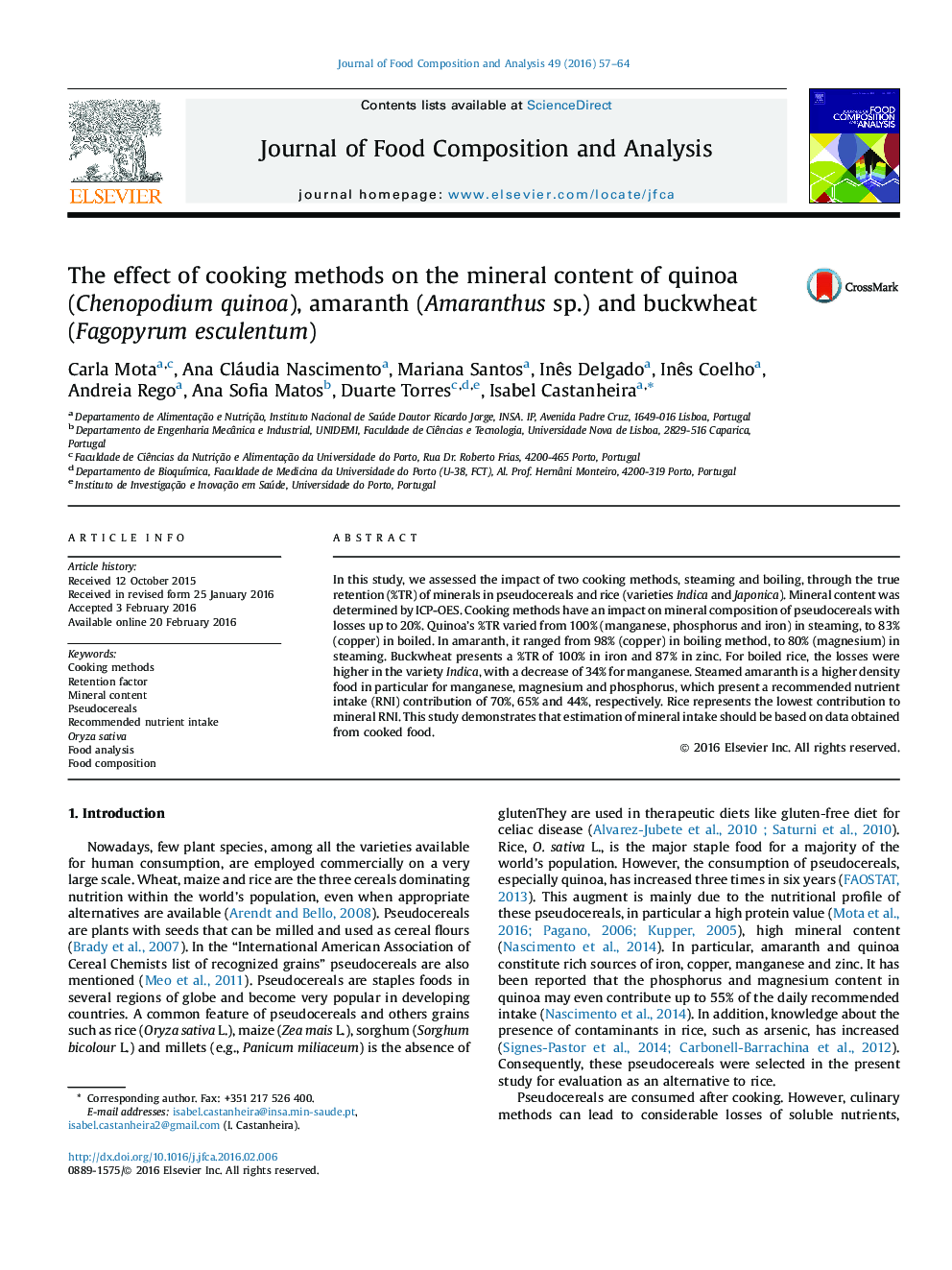| کد مقاله | کد نشریه | سال انتشار | مقاله انگلیسی | نسخه تمام متن |
|---|---|---|---|---|
| 1218059 | 1494493 | 2016 | 8 صفحه PDF | دانلود رایگان |

• Effect of cooking on mineral profile was studied for four gluten free grains.
• Manganese was the most affected by the cooking process on Indica rice.
• Steamed quinoa presented the lowest differences when compared with raw.
• Amaranth provide the higher intake of minerals.
In this study, we assessed the impact of two cooking methods, steaming and boiling, through the true retention (%TR) of minerals in pseudocereals and rice (varieties Indica and Japonica). Mineral content was determined by ICP-OES. Cooking methods have an impact on mineral composition of pseudocereals with losses up to 20%. Quinoa’s %TR varied from 100% (manganese, phosphorus and iron) in steaming, to 83% (copper) in boiled. In amaranth, it ranged from 98% (copper) in boiling method, to 80% (magnesium) in steaming. Buckwheat presents a %TR of 100% in iron and 87% in zinc. For boiled rice, the losses were higher in the variety Indica, with a decrease of 34% for manganese. Steamed amaranth is a higher density food in particular for manganese, magnesium and phosphorus, which present a recommended nutrient intake (RNI) contribution of 70%, 65% and 44%, respectively. Rice represents the lowest contribution to mineral RNI. This study demonstrates that estimation of mineral intake should be based on data obtained from cooked food.
Journal: Journal of Food Composition and Analysis - Volume 49, June 2016, Pages 57–64